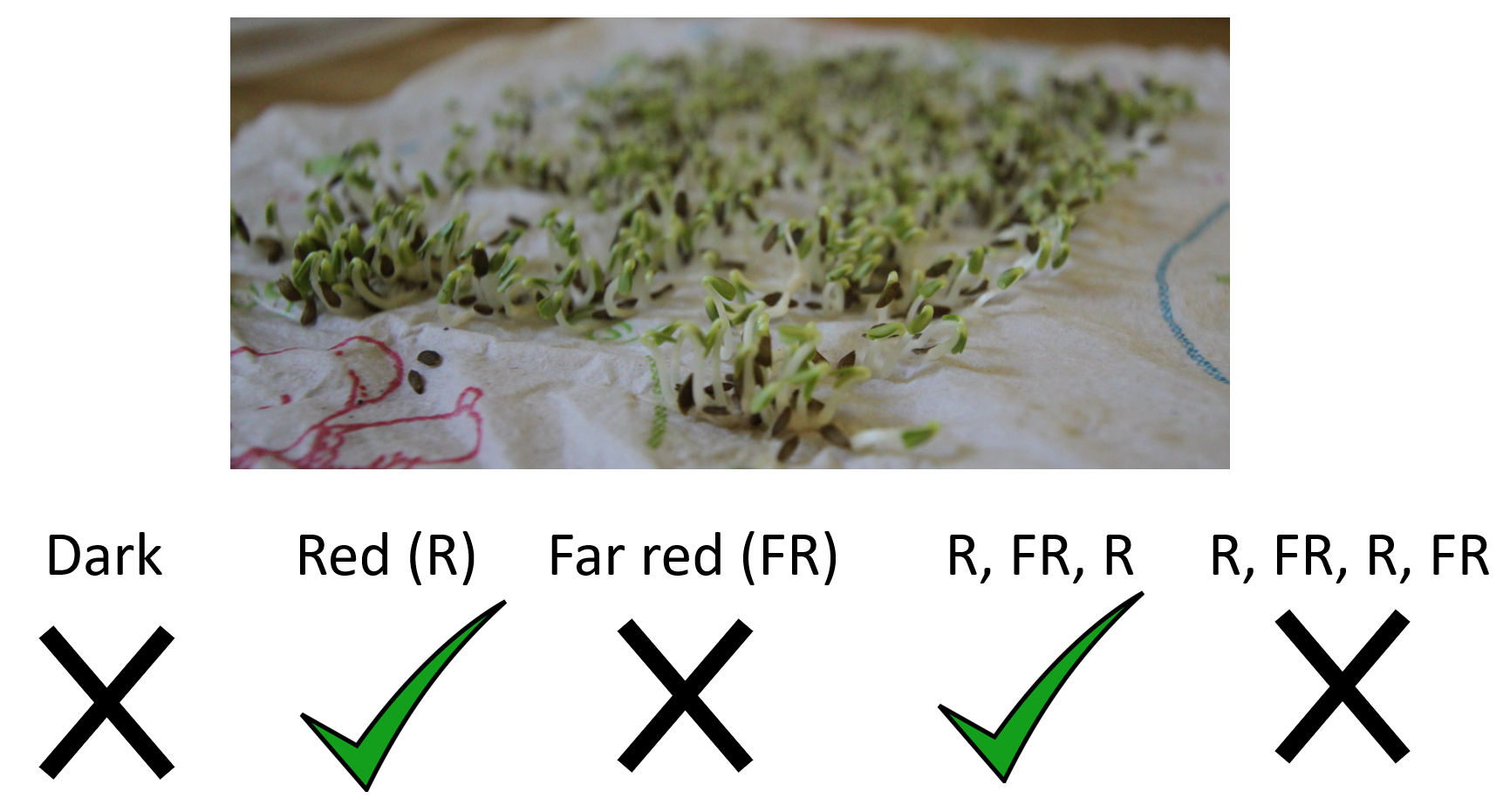4.2.5: Dormancy
- Page ID
- 32002
Learning Objectives
- List the environmental factors that break seed dormancy (induce germination) and define the horticultural techniques based on these factors.
- Explain how phytochrome mediates light-induced germination in lettuce.
During certain time periods or environmental circumstances, active growth is not advantageous for a plant. For example, the embryos in seeds must stay dormant for long enough to disperse from the parent plant or until there are suitable conditions for growth (temperature, light availability, water, etc.). In seeds, the phytochrome system is not used to determine direction and quality of light (shaded versus unshaded). Instead, is it used merely to determine if there is any light at all. This is especially important in species with very small seeds, such as lettuce. Because of their size, lettuce seeds have few food reserves. Their seedlings cannot grow for long before they run out of fuel. If they germinated even a centimeter under the soil surface, the seedling would never make it into the sunlight and would die. In the dark, phytochrome is in the Pr (inactive form) and the seed will not germinate; it will only germinate if exposed to light at the surface of the soil. Upon exposure to light, Pr is converted to Pfr, which signals transcription of the gene that encodes amylase, an enzyme that breaks down starches stored in the seed into simple sugars. Germination then proceeds. Experimentally exposing lettuce seeds to red light induces germination because this converts Pr to Pfr. Exposure to far red light inhibits germination because this causes the active form of phtochrome (Pfr) to be converted to the inactive form (Pr; Figure \(\PageIndex{1}\)).

Several additional factors are involved in seed germination. Exposure to a cold period can also induce germination in seeds. Cold stratification is a horticultural technique that involves storing seeds in cold conditions to promote germination. Sometimes seeds require mechanical abrasion of the seed coat, facilitated by the soil. Scarification is a horticultural technique that simulates this abrasion by cutting the seed coat with a knife or other means. Seeds may also require exposure to water, which can wash chemicals from the seed coat that inhibit germination. Seeds that are dispersed by animals that eat the fruits are adapted to the acids in the digestive tract. To promote germination in these species, horticulturalists may need to bathe these seeds in acid.
Likewise, trees in certain climates become dormant in the winter (setting of winter buds; Figure \(\PageIndex{2}\)). Similarly to how it controls flowering, photoperiodism mediated by phytochrome stops vegetative growth and promotes the setting of winter buds. This occurs as the days grow shorter in the autumn. To break dormancy in the spring, the buds may need to first be exposed to cold winter temperatures. In other cases, a certain period of time just needs to pass.

Attributions
Curated and authored by Melissa Ha using the following sources:
- 16.4E: Photoperiodism and Phytochrome from Biology by John. W. Kimball (licensed CC-BY)
- 30.6 Plant Sensory Systems and Responses and 32.2 Pollination and Fertilization from Biology 2e by OpenStax (licensed CC-BY). Access for free at openstax.org.
- Plant Hormones and Sensory Systems by Biology 1520 Introduction to Organismal Biology (licensed CC-BY-NC-SA)


